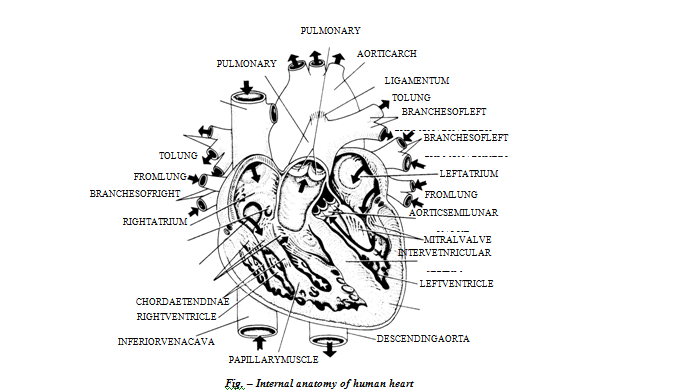
working of human heart with diagram
Transportation in animals and plants of Class 7
The heart is an organ which beats continuously to act as a pump for the transport of blood, which carries other substances with it. human heart works like a pump non-stop. The heart is located in the chest cavity with its lower tip slightly tilted towards the left Heart is a muscular pumping organ. The adult human heart is about the size of a closed fist. It is located in the chest cavity slightly towards the left, enclosed in a double walled sac called pericardium. It protects the heart from mechanical injury. A pericardial fluid is present between the heart wall and pericardium. The heart is made of muscle cells called cardiac muscle fibers.
Structure of heart
The human heart is a four-chambered organ divided by septa into two halves – the right half and the left half. Each half consists of two chambers the upper, small-sized auricle or atrium and the lower, large-sized ventricle. The auricles are demarcated externally from the ventricles by an irregular groove called the coronary sulcus. The ventricles form the larger, lower part of heart. The two ventricles are demarcated externally from each other by an oblique groove called interventricular sulcus. This groove has coronary blood vessels.

Internally, the heart has the following main components – two auricles, two ventricles
Auricles
The auricles are thin-walled chambers and are separated from each other by an inter-auricular septum. The septum has an oval, thin area called the fossa ovalis. It marks the position of an opening, the foramen ovale between the two atria in a foetus.
Ventricles
These are thick-walled chambers and are separated from each other by an obliquely placed inter-ventricular septum. The wall of the left ventricle is thicker than that of the right ventricle, because the left ventricle has to pump blood into vessels, which in turn carry the blood to the entire body. The right ventricle pumps blood to the pulmonary arteries, which carry it to the lungs.
Related Topics






